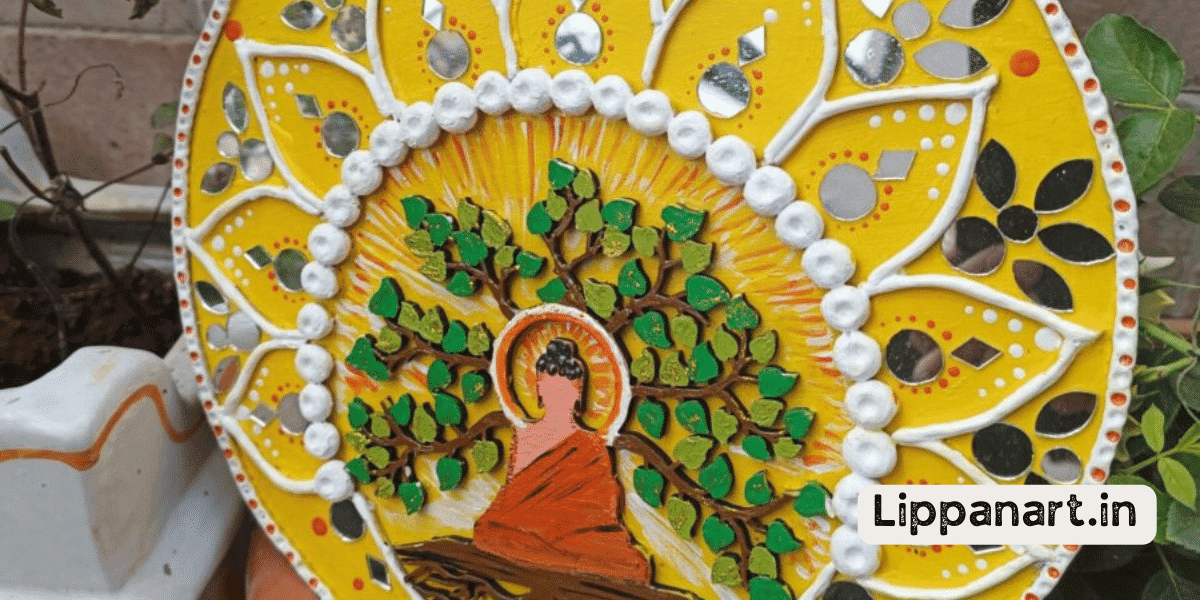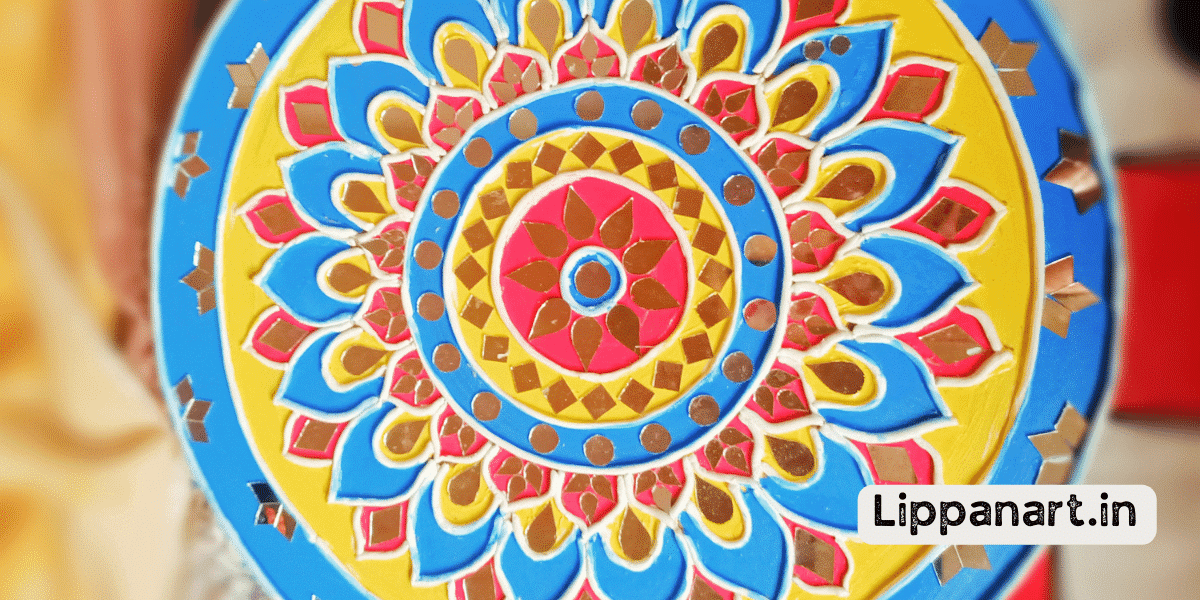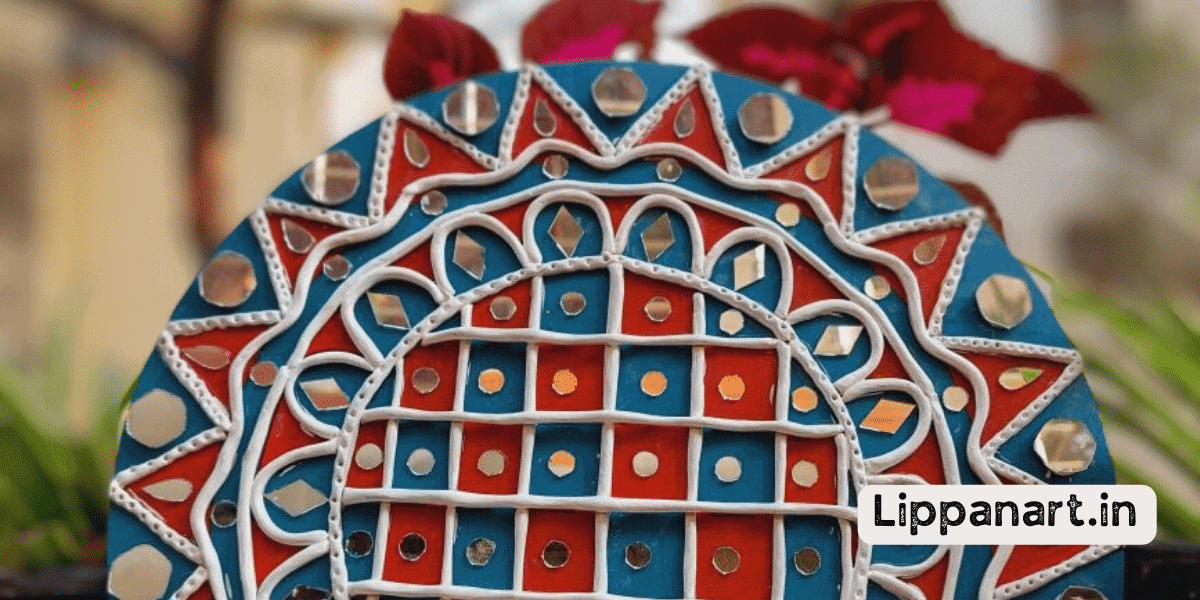‘An ounce of practice is worth a pound of theory’ – Ralph Waldo Emerson.
If you’re looking for a creative and innovative way to express yourself, lippan art is the answer. This art form uses clay to form intricate designs; with the right technique and practice, you can create beautiful pieces.
This guide aims to assist you in rolling clay for lippan art. By following these steps, you can enjoy the pleasure and fulfilment of creating your distinctive art pieces.
Preparing the Clay for Lippan Art
To prepare clay for lippan art, gather the right materials, choose the right clay, and set up your workspace.
Start by getting the necessary supplies, such as clay, a rolling pin, and a work surface.
Then, select a clay suitable for your project and easy to roll and shape.
Finally, find a well-lit area to work in and ensure you have a safe and comfortable workplace.
Once you have all your materials and workspace ready, you can start creating your lippan art!
Gather Your Materials
Gather the necessary materials for your lippan art projects, such as clay, paper, glue, and paint. You’ll need clay strips, powder, and other creative elements to help you craft a masterpiece. To evoke emotion in your audience, use the power of innovation by combining clay and other materials in unique and creative ways. Add texture and colour to the clay strips and powder to create a unique visual impact. With the right materials, your lippan art project can become a modern work of art that will stand out from the rest.
Choose the Right Clay
Choosing the right clay is essential when crafting your lippan art project. It should be durable yet malleable enough to shape. To ensure success, you’ll want to consider the following factors:
- Texture: Look for soft and pliable clay but not too sticky or crumbly.
- Colour: Choose a clay that complements the colours in your lippan art design.
- Durability: Pick clay that can hold its shape after rolling and drying.
- Innovation: Try experimenting with different types of clay to create unique textures and effects.
With the right clay, you can unlock the creative potential of your lippan art project and roll out something truly innovative.
Set Up Your Workspace
Set up your workspace before starting your project for the best results. A great workspace should include a sturdy wall, a clean work surface, and all the necessary tools. Add a few extra touches to make your workspace more creative, like a bright rug, window decorations, and a cosy chair.
| Wall | Clay | Glue |
|---|---|---|
| Secure | Variety | Adhesive |
| Sturdy | Quality | Non-toxic |
| Creativity | Design | Strong |
A well-designed workspace is key to unleashing your creative potential. Your workspace should be designed to spark your imagination and promote innovative thinking. When selecting your materials, choose the highest quality clay and glue to ensure beautiful results. With the right tools and workspace, you can create something truly remarkable!
Rolling the Clay for Lippan Art
Rolling the clay for lippan art is a process that requires proper conditioning of the clay, creating clay sheets using a rolling pin, and achieving uniform thickness.
First, condition the clay by kneading it with your hands until it’s soft and pliable.
Once conditioned, roll the clay out using a rolling pin until it’s about 1/8 inch thick, creating a uniform sheet.
Conditioning the Clay
Conditioning the clay involves kneading it to make it pliable. To get started, knead your air-dry clay for a few minutes until it’s soft. Then, roll it into a flat sheet and let it air dry. To ensure your sheet is thin enough, use a clay roller to get a uniform thickness.
Once your clay sheet is dry, it’s time to get creative! You can use simple tools such as a comb, stylus, or toothpick to create unique designs. Experiment with different techniques to find the look you’re aiming for.
To finish, you’ll need to let the clay dry completely before adding any colour to your piece of art. With the right conditioning and creativity, your clay for lippan art will be a stunning success.
- Editor’s Choice
- Best Seller
- Amazon Choice
Creating Clay Sheets
Kneading the clay to make it pliable is the first step in creating clay sheets for lippan art.
To begin, roll a portion of modelling clay into a cylinder shape. Then use a rolling pin to flatten the clay into a thin sheet.
This sheet should be uniform and smooth, with no air bubbles or cracks. Remember that a clay sheet does not need to be perfect – this clay art form is meant to be creative and unique!
If you need to, use a clay shaper or a knife to adjust the edges of the sheet to create the desired shape. You can also use a clay roller to make sure the sheet is perfectly even.
Once you have the desired shape, let the clay sheet dry before adding it to your lippan art.
Using a Rolling Pin
After making a clay sheet, you can extend it further by using a rolling pin. Rolling pins are essential for lippan art, so choose the right size for your board.
Roll the pin across the clay sheet in both directions, applying even pressure to get started. You’ll want to achieve a thin, even sheet of clay.
Here’s a breakdown of the steps to create a clay sheet with a rolling pin:
Preparing the Board:
- Place the clay sheet on a large and flat board to support the clay.
- Dust the board with cornstarch or talcum powder to avoid sticking.
Rolling the Clay:
- Start at one end of the clay sheet and roll the pin across the entire sheet.
- Roll the pin forward and backwards in both directions to ensure the clay is even.
- Roll the clay until it is thin and reaches the desired size.
- Lift the clay sheet of the board and place it on a new board for further rolling.
- Repeat the rolling process until the desired size and thickness are achieved.
Achieving Uniform Thickness
To achieve a uniform thickness, use your rolling pin to apply even pressure while rolling the clay in both directions. When working with clay for lippan art, uniformity is key. Roll the clay using a rolling pin in both directions, applying even pressure throughout. This will ensure the clay is rolled to the desired thickness, and the lippan art will be visually pleasing.
To add a creative touch, you can vary the pressure when rolling the clay, allowing the lippan art to have some unique texture. Always remember to be mindful of the thickness when rolling the clay. An even thickness will help ensure that the lippan art looks its best.
- Editor’s Choice
- Best Seller
- Amazon Choice
Tips for Successful Clay Rolling
If you want to make beautiful lippan art, rolling the clay is one of the most important steps.
For a successful outcome, it is important to remember some crucial pointers, like preventing air bubbles, ensuring a consistent texture, and storing the clay correctly.
With the right techniques, you’ll be able to make stunning lippan art with ease.
Avoiding Air Bubbles
When rolling clay for lippan art, it’s important to avoid air bubbles by rolling it slowly and carefully. To ensure a successful project, take the following steps:
Choose the right clay:
- Molding clay
- Air dry clay
Prepare the clay:
- Knead it to soften
- Roll it out to a desired thickness
Paint the clay:
- Use acrylic paints
- Let it air dry
By picking the right clay, preparing it, and painting it, you’ll be able to create a stunning lippan art piece without any air bubbles.
This will allow you to show off your creative skills and make something unique.
Maintaining Consistency
Now that you have learned how to avoid air bubbles while rolling clay for lippan art, it’s time to focus on maintaining consistency.
To get the perfect lippan art piece, keeping the thickness of your clay rolls consistent is important. You can use a ruler to measure the thickness of the clay before and after rolling. This will ensure that your lines are uniform.
It’s also important to pay attention to the pressure you are putting on the clay. Too little pressure will make the clay thin and prone to air bubbles, while too much pressure can make the clay too thick and uneven. To maintain consistency, apply the same pressure every time you roll.
Finally, check the clay for any air bubbles that may have formed during the rolling process. Use the back of a toothpick to push them out if you find any lightly.
With consistency and practice, you can master lippan art in no time!
Proper Clay Storage
Properly storing your clay is essential for successful lippan art. You’ll want to keep it in an airtight container to protect it from drying out.
To make sure your clay for art and craft is in tip-top condition, here’s what you should do:
- Keep clay in an airtight container
- Mason jars
- Tupperware
Place air-dry clay for art and craft in a cool, dry place. Avoid placing it in the sun or near any heat source.
Check the lippan art kit before each use. Make sure the clay is still pliable. If it’s dry, add a few drops of water to rehydrate it.
Frequently Asked Questions
What Type of Clay Is Best for Lippan Art?
For lippan art, air-dry clay is best. It’s lightweight, easy to shape, and creates beautiful textures. Plus, you can make it yourself with everyday ingredients. It’s the perfect medium for unleashing your creativity!
How Do I Store My Rolled Clay for Lippan Art?
Store your rolled clay safely and securely by sealing it in an airtight container. Preserve your pieces with perfect protection and keep them in a cool, dry location. Innovate and invest in a secure system for your lippan art.
What Tools Are Necessary for Creating Lippan Art?
You’ll need a few tools to create lippan art, such as a rolling pin, clay, and a surface to work on. Get creative and bring in other objects to make your art unique!
How Long Does the Clay Need to Be Rolled for Lippan Art?
You don’t have to roll the clay for an exact length – creativity is key! However, the clay should be thin enough to be moulded and shaped into the desired design easily. Try various lengths and thicknesses to discover the ideal combination for your project.
Are There Any Special Techniques for Creating Intricate Patterns in Lippan Art?
Yes! Try using a wooden stylus or a small metal tool to draw intricate patterns onto the clay surface. Experiment with different shapes and sizes to get a unique design. Be creative and have fun!

















